UPSC Daily Current Affairs: 5th November 2024 | Current Affairs & Hindu Analysis: Daily, Weekly & Monthly PDF Download
GS2/Polity
Ralengnao Bob Khathing
Source: Indian Express

Why in News?
Recently, Defence Minister inaugurated the Major Ralengnao ‘Bob’ Khathing Museum of Valour at Tawang in Arunachal Pradesh.
About
- Ralengnao Bob Khathing: Born on February 28, 1912, in the Ukhrul district of Manipur, Bob Khathing belonged to the Tangkhul Naga community.
- World War II Achievements: He was notable for being the first Manipuri to receive the King’s Commission during World War II.
Bob Khathing’s Army Service
- Awards and Recognition: He was honored with the Member of the British Empire (MBE) for his efforts to rally Naga support against the Japanese forces in Burma and India. Additionally, he received the Military Cross (MC) for his exceptional bravery.
- Military Commission: Bob Khathing was commissioned into the 9/11 Hyderabad Regiment, which is now known as the Kumaon Regiment.
- Transfer to Assam Regiment: In 1942, he was reassigned to the Assam Regiment based in Shillong.
- Role in Guerrilla Warfare: During the Second World War, he participated in a guerrilla unit called Victor Force, established by the British to fight against the Japanese along the Burma-India road.
- Advisor to SANCOL: He served as an advisor to SANCOL, which consisted of the 153 Gurkha Parachute Battalion formed in June 1944 and led by Major John Saunders.
- Integration of Tawang: Bob Khathing led a mission to peacefully incorporate Tawang into India.
- Establishing Security Frameworks: He played a critical role in forming essential military and security institutions, including the Sashastra Seema Bal, Nagaland Armed Police, and the Naga Regiment.
- Diplomatic Role: He was the first individual of tribal descent to serve as an ambassador for India in Burma, now known as Myanmar.
GS3/Environment
Kalka-Shimla Railway (KSR)
Source: Indian Express
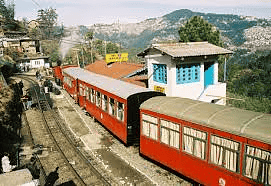
Why in news?
Recently, the Chief Minister of Himachal Pradesh urged the Central government to consider the possibility of operating trains on the Kalka-Shimla narrow-gauge railway, which is recognized as a UNESCO World Heritage site, using green hydrogen as fuel.
Overview of Kalka-Shimla Railway (KSR)
- The Kalka-Shimla Railway is located in North India and runs through a predominantly mountainous region, connecting Kalka in Haryana to Shimla in Himachal Pradesh.
Construction History
- This railway was constructed in 1898 to link Shimla, the summer capital during British rule, with the wider Indian railway network.
- The chief engineer of this project was S. Harington.
- The 96 km long single-track line, commonly referred to as the "toy train line," was inaugurated in 1903.
- It features 18 stations, 102 tunnels, and over 850 bridges along its route.
Geographical and Engineering Features
- The railway experiences a significant change in altitude, rising from Kalka at 655 meters to Shimla at 2,076 meters.
- Notable engineering achievements include the world's highest multi-arch gallery bridge located at Kanoh and the longest tunnel at Barog, both remarkable feats at the time of their construction.
- The railway was designated as a UNESCO World Heritage Site in 2008.
- It holds a Guinness World Record for the steepest altitude gain over its 96-kilometer length, which includes the crossing of 800 bridges and viaducts.
GS3/Economy
The Paradox of Stagnant Rural Wages
Source: Indian Express
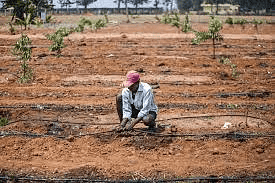
Why in news?
From 2019-20 to 2023-24, India’s economy grew at an average rate of 4.6% annually, with the agricultural sector growing at 4.2%. Despite this economic growth, rural wages have remained stagnant.
Disparity between Rural Wages and Economic Growth:
- While the Indian economy has shown significant GDP growth averaging 4.6% annually from 2019-20 to 2023-24, rural wages have stagnated, with real agricultural wages exhibiting minimal growth and often negative growth due to rising inflation.
Labor Supply Dynamics:
- The increase in female Labor Force Participation Rates (LFPR) in rural areas has led to a greater labor supply, putting downward pressure on wages as more workers compete for the same or fewer jobs, mainly in low-productivity agricultural sectors.
Capital-Intensive Growth:
- Economic growth has become increasingly reliant on capital rather than labor, which means a larger share of income is going to capital owners instead of workers, resulting in fewer job opportunities in higher-paying sectors and exacerbating wage stagnation.
What are the major factors behind the Stagnant Rural Wages?
- Increased Female Labour Force Participation (Surplus of Labour): The rise in rural female LFPR has been significant, largely due to government initiatives that have allowed women more time for employment outside the home. However, this has resulted in a surplus of labor, which drives wages down.
- Majority of Choosing Agricultural Employment: Even as more women enter the workforce, most are securing jobs in agriculture, which offers lower pay compared to non-farm sectors. This leads to an oversupply of labor in an already low-productivity area, suppressing wages further.
- Capital-Intensive Economic Growth: The growth of the Indian economy has increasingly stemmed from capital-intensive sectors that require fewer workers, shifting income generation from labor (wages) to capital (profits), limiting the demand for rural labor and contributing to wage stagnation.
- Low Demand for Non-Agricultural Labor: Wage growth in rural non-agricultural sectors has been weaker, with real wages declining, reflecting a lack of job opportunities outside agriculture, partly due to low demand for labor in capital-intensive industries.
What are the steps taken by Govt to address the issue of Low Rural Wages?
- Income Transfer Schemes: The central and state governments have launched various income transfer schemes such as the Pradhan Mantri Kisan Samman Nidhi (PM-KISAN), which provides Rs 6,000 annually to farmer households in rural areas. Additionally, several states have introduced income-support schemes for women, like Maharashtra's Ladki Bahin Yojana, offering Rs 1,500 monthly to women from low-income households.
- Employment Generation Programs: Programs like the Mahatma Gandhi National Rural Employment Guarantee Act (MGNREGA) guarantee 100 days of wage employment for rural households. The government is also fostering rural entrepreneurship through schemes such as the Mudra Yojana, which provides micro-loans to rural businesses, enhancing job opportunities.
- Skill Development Initiatives: The government is investing in rural skill development programs aimed at improving employability in non-farm sectors. Initiatives like the Deen Dayal Upadhyaya Grameen Kaushalya Yojana (DDU-GKY) emphasize upskilling rural youth and women to help them secure better-paying jobs outside agriculture.
- Rural Infrastructure Development: Initiatives to improve rural infrastructure, such as the Pradhan Mantri Gram Sadak Yojana (PMGSY), not only create temporary jobs in construction but also enhance access to employment, markets, and services.
Way forward:
- Diversification of Employment Opportunities: To create a broader range of job opportunities, it is crucial to support non-agricultural sectors through targeted investments in skill development, vocational training, and entrepreneurship initiatives.
- Strengthening Agricultural Productivity: Implementing policies focused on modernizing agricultural practices and enhancing productivity can significantly boost the income of rural laborers.
Mains PYQ:
- Though there have been several different estimates of poverty in India, all indicate reduction in poverty over time. Do you agree? Critically examine with reference to urban and rural poverty indicators. (2015)
- Examine the pattern and trend of public expenditure on social services in the post-reforms period in India. To what extent has this been in consonance with achieving the objective of inclusive growth? (2024)
GS1/Indian Society
Tumaini Festival
Source: The Hindu

Why in news?
The Tumaini Festival in Malawi serves as a bridge between refugees and the local community through the celebration of music, art, and crafts, creating a sense of connection and hope.
About Tumaini Festival:
- The Tumaini Festival, established in 2014, is an annual cultural event taking place within the Dzaleka Refugee Camp in Malawi.
- This festival holds the unique distinction of being the only one of its kind hosted within a refugee camp globally.
- Managed by refugees themselves, the festival offers a platform for displaced individuals to foster community ties, solidarity, and cultural exchange.
- Every year, the festival draws thousands of participants and features performances from artists worldwide.
- Artistic expressions showcased at the festival include a variety of forms such as music, dance, theatre, and visual arts.
- In 2024, the Tumaini Festival was honored with the Cultures of Resistance Award (CoR Award).
Key Facts about Malawi:
- Malawi is a landlocked country located in Southeastern Africa.
- It shares borders with Tanzania, Mozambique, and Zambia.
- The capital city is Lilongwe.
- Major languages spoken in Malawi include English and Chichewa, both of which are official languages.
- The currency used is the Malawi kwacha (MWK).
- Malawi is characterized by its stunning highlands and expansive lakes, occupying a narrow strip of land along the East African Rift Valley.
- Lake Nyasa, known as Lake Malawi in the country, is one of the deepest lakes globally, covering more than one-fifth of Malawi's total area.
- Despite its natural beauty, Malawi remains one of the poorest nations in the world, with an economy heavily reliant on agriculture, which employs over 80% of its population.
About Dzaleka Refugee Camp:
- The Dzaleka Refugee Camp is the only permanent refugee camp in Malawi.
- Established in 1994, it was created in response to a significant influx of forcibly displaced individuals escaping genocide, violence, and warfare in countries such as Burundi, Rwanda, and the Democratic Republic of Congo (DRC).
- For the past 30 years, the camp has continued to welcome refugees and asylum seekers from Somalia, Ethiopia, and various other nations.
GS1/Indian Society
Manipur’s non-Naga Thadou community lends support to NRC
Source: The Hindu
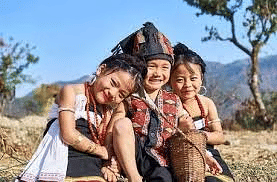
Why in news?
The Thadou tribe, recognized as one of the most ancient and significant non-Naga tribes in Manipur, has expressed its backing for the implementation of the National Register of Citizens (NRC) within the state.
About the Thadou Community
- Overview: The Thadou community is one of the oldest indigenous tribes in Manipur, acknowledged as a unique ethnic group. Manipur has a total of 29 officially recognized indigenous tribes, each with its own rich cultural heritage and folklore.
- Historical Background: Since the First Census of India in 1881, the Thadou tribe has been recognized as the largest tribe in Manipur, possessing a distinct historical narrative different from the Kukis.
- Scheduled Tribe Recognition: The Thadou tribe is formally recognized as an independent Scheduled Tribe under the 1956 Presidential Order.
- Population: According to the 2011 Census, the population of the Thadou community is recorded at 215,913.
- Identity: The Thadou people emphasize their distinct identity from the Kuki community, highlighting unique aspects of their language, culture, and history.
- Language: The Thadou language is part of the Tibeto-Burman family and features a unique dialect that differentiates it from neighboring tribes.
- Geographic Distribution: The Thadou primarily reside in Manipur but can also be found in Nagaland, Assam, and Mizoram, predominantly in hilly areas.
- Socioeconomic Status: The Thadou community is mainly engaged in agriculture, particularly jhum cultivation, and possesses extensive knowledge of medicinal plants; however, they face significant challenges in terms of infrastructure and education.
- Religious Practices: Traditionally, the Thadou practiced animism, although many have converted to Christianity, leading to a blend of traditional and Christian customs.
- Position Amid Ethnic Conflict: The Thadou tribe has been impacted by ongoing ethnic tensions between the Meitei and Kuki-Zo communities, particularly highlighted by events on May 3, 2023, and continues to assert its unique identity in this context.
GS1/Indian Society
Yanadi Tribe
Source: The Hindu
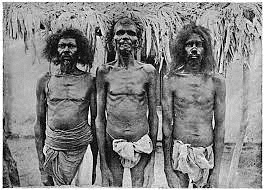
Why in news?
Recently, three children from the Yanadi tribe, who had gone missing from their homes in Kalekhanpeta, Machilipatnam, Andhra Pradesh, were located and safely returned to their families.
About Yanadi Tribe:
- The Yanadis are recognized as one of the major scheduled tribes in Andhra Pradesh.
- They are classified among the most vulnerable tribal groups in India, facing extreme poverty and social isolation.
- A large segment of the Yanadi population resides in the plains of Nellore, located in the eastern coastal region of Andhra Pradesh.
- According to the 2001 census, the population of Yanadis in Andhra Pradesh was recorded at 462,167.
- Their native language is Telugu.
Historically:
- Yanadis have traditionally engaged in activities such as hunting, gathering, and agriculture.
- They depend on their profound understanding of local land and resources for their livelihood.
Health and Traditional Knowledge:
- The Yanadi community possesses extensive traditional knowledge regarding health.
- This includes both everyday healthcare practices and specialized treatments, such as remedies for snakebites.
- They utilize the medicinal properties of various plants to address health issues such as gastrointestinal problems, respiratory conditions, skin ailments, and reproductive health concerns.
Religious Beliefs and Cultural Practices:
- The Yanadis celebrate numerous religious beliefs and festivals that are deeply connected to the flora of their forests.
- One notable cultural expression is the Dhimsa Dance, which is performed during festivals and special occasions.
GS3/Economy
US Elections and Chinese Stimulus Drive Recent FPI Selloff in India
Source: India Today
Why in news?
Benchmark indices faced renewed selling pressure on November 4, with all sectoral indices declining in early trade. The selloff was triggered by multiple factors, primarily external ones, which outweighed domestic influences.
Benchmark Indices in India
- Benchmark indices are crucial indicators of the stock market's overall performance, representing top-performing companies and reflecting market trends and investor sentiment.
Main benchmark indices
- Sensex (BSE Sensex): This index consists of 30 of the largest and most actively traded stocks on the Bombay Stock Exchange (BSE), established in 1986. It reflects the performance of diverse sectors such as finance, IT, and manufacturing, serving as a barometer for the Indian economy.
- Nifty 50 (NSE Nifty): This benchmark index comprises 50 large-cap companies across 14 sectors and was launched in 1996. It provides a broader market representation than the Sensex and is commonly used by investors as a benchmark for mutual funds and ETFs.
Importance of Benchmark Indices
- Market Trends: They indicate the direction of the stock market, guiding investors in understanding bullish or bearish movements.
- Performance Gauge: Indices act as performance benchmarks for mutual funds and portfolio managers.
- Economic Health: Movements in these indices often reflect the economy's health and stability, influenced by corporate earnings, market sentiment, and economic policies.
Domestic triggers
- The bearish market sentiment is partly due to fears over weak corporate outlooks and potential earnings cuts, leading to a reassessment of stock valuations.
- Domestic investors, particularly mutual funds, are not purchasing enough to counterbalance foreign portfolio investor (FPI) selloffs, unlike during previous corrections.
- There are fading expectations of an RBI rate cut by December, with ongoing inflation risks suggesting that any potential rate cut might be postponed until late 2025.
- These domestic factors overshadow hopes for increased government spending, which has remained low in the first half of the fiscal year.
US elections-linked volatility, Fed trajectory
- Indian markets are currently facing heightened volatility due to the closely contested U.S. presidential election. A possible win for Trump is perceived as favorable for U.S. stocks and the dollar but could negatively impact treasuries.
- Furthermore, the Federal Reserve's upcoming policy meeting on November 6-7 raises concerns that interest rates may be maintained, dampening hopes for additional rate cuts.
- The most significant external factor influencing the market is China, as FPIs are shifting their focus there due to concerns over India's overvaluation and disappointing corporate earnings.
China Factor
- As the U.S. election progresses, China’s Standing Committee of the National People’s Congress is set to hold an important meeting that is expected to announce a substantial economic stimulus package.
- This potential package is likely to fund land and property purchases, bank recapitalizations, provincial debt refinancing, and household support.
- If Trump secures a second term, tariffs exceeding 50% on Chinese goods could result in a 2% decline in China’s growth, necessitating a more significant stimulus response.
- Analysts estimate that China's stimulus could reach 2-3% of its GDP annually if Trump wins, potentially diminishing India's attractiveness to FPIs.
- Additionally, on November 1, China’s central bank initiated a $70 billion stimulus injection—the largest since the onset of COVID-19—to address liquidity issues and boost bank lending, which has slowed to a five-quarter low.
- This substantial fiscal maneuver demonstrates China’s commitment to stabilizing its economy, with potential ripple effects that could also impact global markets, including India.
GS1/Indian Society
Ningol Chakkouba Festival
Source: Hub News
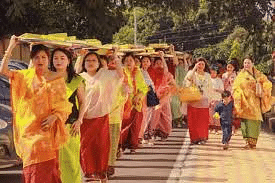
Why in news?
Recently, the Ningol Chakkouba festival was celebrated with great enthusiasm and joy across the State of Manipur.
About
- The Ningol Chakkouba festival takes place annually on the second day of the lunar month of Hiyangei according to the Meitei calendar.
- Initially celebrated by the Meitei community, the festival has gained popularity among various other communities, highlighting the significance of family reunions and the promotion of peace and harmony within society.
- The term "Ningol" translates to 'married woman', while "Chakouba" means 'invitation for feast', indicating that the festival is a time when married women are invited back to their parental homes for a celebratory meal.
- A key feature of the festival is the visit of married sisters to their maternal homes, where they enjoy a grand feast and joyful reunions, often accompanied by the exchange of gifts.
- It is customary for the son of the family to formally invite his sister to the Ningol Chakkouba celebrations about a week in advance.
- This festival is also observed by Manipuris living outside of Manipur.
Key facts about the Meitei Community
- The Meiteis are the largest ethnic group in Manipur.
- Language: They communicate in the Meitei language, which is officially termed Manipuri. This language is one of the 22 recognized official languages of India and serves as the sole official language in the State of Manipur.
- Distribution: The Meitei people primarily inhabit the Imphal Valley region of Manipur, although there are significant populations in other Indian states such as Assam, Tripura, Nagaland, Meghalaya, and Mizoram. Additionally, notable communities of Meiteis can be found in neighboring countries like Myanmar and Bangladesh.
- Clans: The Meitei community is organized into various clans, and members of these clans typically do not intermarry.
- Economy: Rice cultivation in irrigated fields forms the backbone of the Meitei economy.
GS3/Environment
Mount Lewotobi Laki-Laki
Source: Indian Express
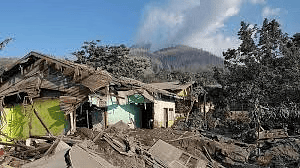
Why in News?
Recently, at least 10 people died after Mount Lewotobi Laki-laki in eastern Indonesia erupted and forced authorities to evacuate several nearby villages.
About
- Mount Lewotobi Laki-Laki is located on Flores Island.
- This mountain is a volcanic structure situated in the East Nusa Tenggara province of Indonesia.
- It is part of a twin-volcano system, which local residents perceive as representing male and female mountains.
- The current volcanic activity is occurring at the male volcano, known as Lewotobi Laki-Laki, while the female counterpart is Lewotobi Perempuan.
- Both mountains are classified as stratovolcanoes, which are the most common type of volcano around the globe.
- Stratovolcanoes are formed from layers of lava that repeatedly emerge from the crater.
- Indonesia frequently experiences such volcanic eruptions due to its location along the 'Ring of Fire' in the Pacific region.
- The 'Ring of Fire' is a region characterized by a high number of active volcanoes and seismic activity caused by tectonic plate movements.
What are Stratovolcanoes?
- Stratovolcanoes are tall, steep, and cone-shaped types of volcanoes.
- In contrast to flatter shield volcanoes, stratovolcanoes have higher peaks.
- They are typically found above subduction zones, which are regions where tectonic plates collide.
- Stratovolcanoes are often part of extensive volcanically active areas, such as the 'Ring of Fire' that surrounds much of the Pacific Ocean.
- Approximately 60% of the Earth's individual volcanoes are classified as stratovolcanoes.
- These volcanoes are known for eruptions that involve andesite and dacite, which are types of lava that are cooler and more viscous compared to basalt.
GS3/Science and Technology
First ‘Black Hole Triple’ System Discovered
Source: MIT News

Why in the News?
Scientists have made a groundbreaking discovery of a "black hole triple" system in space, marking the inaugural identification of such a configuration. This discovery is significant because it expands our understanding of how black holes can exist in complex systems.
Understanding Black Hole Triple Systems
- A black hole triple system consists of two stars that orbit around a single black hole. In this case:
- The closer star completes its orbit around the black hole every 6.5 days.
- The more distant star takes approximately 70,000 years to orbit the black hole.
Location and Characteristics
- This unique system is located in the constellation Cygnus, featuring V404 Cygni, which is one of the oldest known black holes. Key characteristics include:
- V404 Cygni is about nine times the mass of the Sun.
- It is situated approximately 8,000 light-years from Earth.
What is a Black Hole?
- A black hole is defined as a region of space where the gravitational pull is so intense that nothing, not even light, can escape from it. Most black holes are formed from:
- Supernova explosions, which occur at the end of a massive star's life cycle.
- However, this discovery suggests an alternative formation process.
Discovery Process
- The black hole triple system was identified by researchers from Caltech and MIT while analyzing astronomical data collected through telescopes. They noted that:
- The stars are gravitationally bound to each other, indicating a stable formation.
- Unlike typical binary systems, which often eject outer stars during formation, this triple system likely formed through a direct collapse of a star without a violent supernova explosion.
- This phenomenon is known as a "failed supernova," which leads to a gentler black hole formation.
Future of the Triple System
- As the system evolves, it is possible that it may not remain stable. The black hole is currently consuming the nearby star, suggesting that:
- Many existing black holes might have originated from triple systems, where the black hole eventually consumed one of its companions.
Previous Year Question (PYQ)
[2019] Recently, scientists observed the merger of giant ‘black holes’ billions of light-years away from Earth. What is the significance of this observation?
(a) ‘Higgs boson particles’ were detected.
(b) ‘Gravitational waves’ were detected.
(c) Possibility of inter-galactic space travel through ‘wormhole’ was confirmed.
(d) It enabled the scientists to understand ‘singularity’.
GS3/Science and Technology
LignoSat
Source: Retuers

Why in News?
The world's first wooden satellite, LignoSat, developed by Japanese researchers, was recently launched into space. This initiative is an early test of using timber for future lunar and Martian exploration.
About LignoSat:
- The name "LignoSat" is derived from "ligno," which means wood in Latin, and "satellite."
- This innovative project is a result of collaborative research between Kyoto University and Sumitomo Forestry Co.
- The primary aim is to utilize the eco-friendly and cost-effective properties of wood for space exploration.
- LignoSat is designed to demonstrate the potential of renewable materials as humanity ventures into living in space.
- It is constructed from magnolia wood, selected for its durability and adaptability.
- The satellite will be launched to the International Space Station (ISS) aboard a SpaceX rocket from the Kennedy Space Center.
- Upon reaching the ISS, it will be deployed from the Japanese experiment module, where tests will be conducted to assess its durability and strength.
- Data will be collected from the satellite to monitor its performance, including its resilience to extreme temperature variations.
Why is wood used?
- Wooden satellites are considered more environmentally friendly when they reenter Earth's atmosphere after completing their missions.
- Unlike metal satellites, which can create air pollution by generating metal particles during reentry, wooden satellites help reduce these environmental concerns.
GS3/Environment
What is the Central Water Commission (CWC)?
Source: PIB
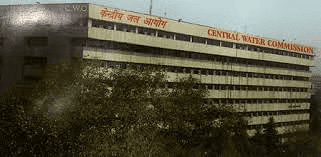 Why in News?
Why in News?
Glacial lakes and other water bodies across the Himalayan region saw a 10.81% increase in area from 2011 to 2024 due to climate change, signalling a heightened risk of Glacial Lake Outburst Floods (GLOFs), according to a Central Water Commission's (CWC) report.
About Central Water Commission (CWC):
- The Central Water Commission (CWC) is a leading technical authority in India focused on water resource management.
- It operates as an attached office of the Ministry of Jal Shakti under the Department of Water Resources, River Development, and Ganga Rejuvenation, Government of India.
- Headquarters are located in New Delhi.
Functions
- The CWC is responsible for initiating, coordinating, and advancing schemes aimed at the control, conservation, and utilization of water resources across the country.
- Key purposes include:
- Flood Control
- Irrigation
- Navigation
- Drinking Water Supply
- Water Power Development
- The Commission also conducts investigations and oversees the construction and execution of various water resource schemes.
Organisation Structure:
- The CWC is led by a chairman who holds the status of Ex-Officio Secretary to the Government.
- Its operations are divided into three main wings:
- Designs and Research (D&R) Wing
- River Management (RM) Wing
- Water Planning and Projects (WP&P) Wing
- Each wing is managed by a full-time member who has the status of Ex-Officio Additional Secretary to the Government of India.
- These wings contain several organizations responsible for specific tasks within their functional scope.
- The National Water Academy, located in Pune, is tasked with training central and state in-service engineers and operates under the guidance of the Chairman.
|
38 videos|5288 docs|1117 tests
|
















